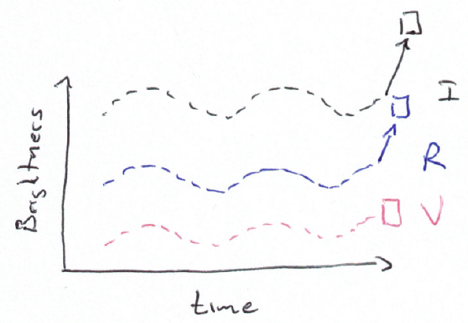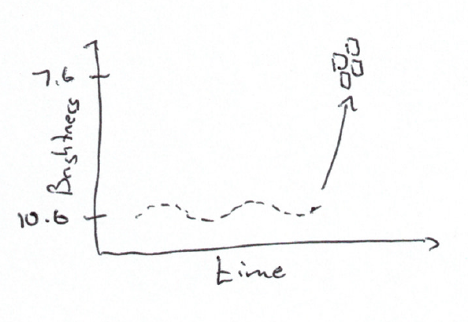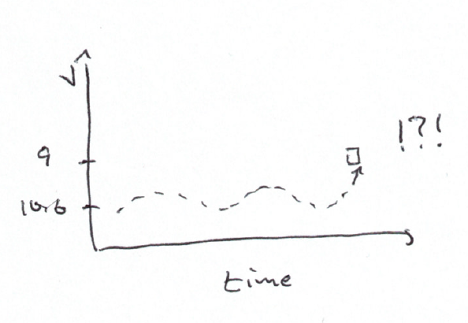
Over the past two years, AAVSO observers have submitted more than 200,000 observations of the Blaze Star. Before going public, any claim of an eruption must be carefully validated. | By Brian Kloppenborg
Here at AAVSO headquarters, we believe that the eruption of T CrB will be one of the most wonderful astronomical events of our lifetimes, so it deserves special treatment. When Brad, Elizabeth, and I announced the pre-eruption dip several months ago, the AAVSO put in place plans to validate any observations that claimed an eruption occurred.
This was a wise decision because we've had no fewer than six false alarms to date. I want to talk about three of the six events because they show that even the most experienced observers and talented researchers can make mistakes. They also demonstrate how useful it is to have data from multiple sources using different observational methods. I didn’t keep screenshots of any of these events, so I’ve drawn illustrative examples of what we saw at the time.
The first event, and my favorite, occurred when a CCD observer showed brightening in three different filters. Elizabeth and I looked at the light curve generator and noticed two interesting things. Foremost, a visual observation about 30 minutes after the CCD observation claimed that no eruption occurred. Second, the CCD data showed normal I and R band measurements, but abnormally bright B and V observations. Elizabeth called the visual observer who was quite certain about their observation. Meanwhile, I spoke with the CCD observer. After about 30 minutes of head scratching we determined that the filter wheel got stuck and their software didn't recognize this problem. The observer then inspected the rig and found that the power cable to the filter wheel had come unplugged. As a result, the R band images were reduced as if they were B and V data. We prove this hypothesis by finding imperfections in the images caused by dust on the filters. In this instance, the CCD observer deleted their discrepant observations within an hour.

The second event, and by far the most common, is when an observer misidentifies the star when the data are reduced or submitted. We have several observers who are monitoring both R CrB and T CrB because they are close to one another in the sky. As a result of the QWERTY layout on English keyboards, data on R CrB sometimes become T CrB. Fortunately, this is relatively easy for the staff to identify since we know the behavior of R CrB fairly well and can see what stars an observer is monitoring in WebObs Search. When this occurs we ask the observer to revise their observations. If they don't revise their observations, we will label them as discrepant.

The third event, and the most difficult to figure out, is one of omission. Visual observers can report two types of observations to the AAVSO. The first is a standard brightness measurement, the second is one of non-detection. We call these latter observations “fainter than” and the observer communicates this to us by submitting data with a “less-than” symbol in their observing report. Unfortunately, if “<” is forgotten, a “<9.0” becomes a “9.0” in our records. These issues are fairly easy for us to adjudicate because most visual observers use the same limiting magnitude each night.

Checks and Balances
With such a variety of issues, you might be wondering how we are able to figure things out.
Our first step is to always look at the light curve generator to see the data in context. Because we have so many observers submitting data in multiple filters, there's a high probability that someone else has made an observation around the same time. This lets us quickly screen out most false alarms. If no other data exist, we have several backup plans in place. These include a list of geographically distributed observers who are willing to be woken up in the middle of the night in the name of science, a series of all-sky cameras at private and public observatories, and our own AAVSOnet telescopes which will be commandeered when needed. These different sources of data are critical so that the eruption is confirmed by multiple sources.
When the eruption occurs, we will let you know. We will notify everyone via an announcement to the forums, an Alert Notice sent by email, social media, a blog post on our website, an email to CBAT for a CBET, and emails to several members of the press. ![]()

